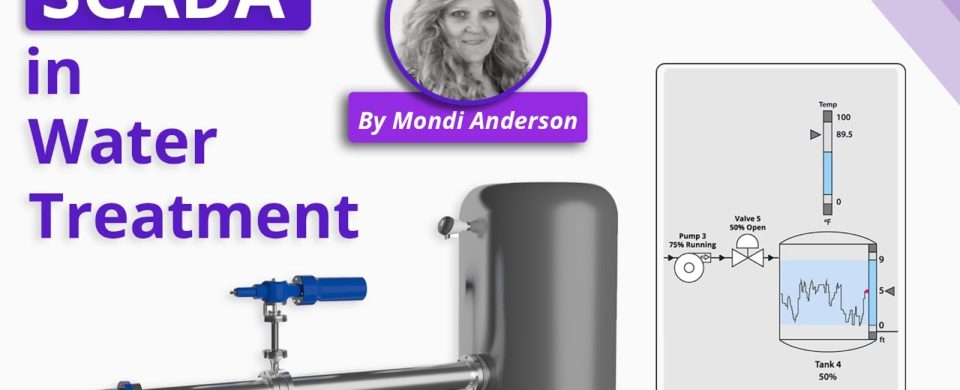SCADA Applications in Water Treatment
▶ C’mon over to https://realpars.com where you can learn PLC programming faster and easier than you ever thought possible!
=============================
▶ Check out the full blog post over at
https://realpars.com/scada-applications
=============================
In previous lessons, we discussed SCADA systems and the components within them.
In this lesson, we are going to discuss the role that a SCADA system may play within a Water Treatment Plant.
SCADA is a collection of hardware and software components.
For the software, we will use some software packages such as Wonderware, Citect, FactoryTalk SE, etc.
That software will be used to create the interface required to view and operate the control system.
We will also have a hardware collection.
We also know that these components will communicate with a processor of some type. These processors, in turn, will allow the components to be viewed, graphically, on the SCADA system.
Pictorially, this hardware presentation may be as simple as flat lines that represent pipes, simple graphic representations of valves, and motors that may change color according to current status such as opened or closed for valves and running or stopped for the motors.
The appearance can also be very elaborate with 3d graphics of spinning motors and rotating valves.
More likely though, something in between with 2d piping that is possibly color-coded based on process and field device graphics that change color according to conditions.
The role that the SCADA system plays within a Water Treatment system is vital for ensuring the quality of the finished product.
That function begins with the graphical interface. Typically, the layout of the graphics would be similar to what may be seen on Process/Piping and Instrumentation Diagrams or P&ID’s.
If you are not familiar with what a P&ID is, essentially it’s a two-dimensional drawing that depicts the layout of the hardware collection we said we would have in the SCADA system.
The controls engineer would take those P&ID’s and create a group of graphical screens that would contain all pertinent information that an operator may need to interact with and control his or her water treatment system.
Depending on the plant preference for graphics, minimally the screens would include some numerical information for process instruments and probably the unit of measurement such as GPM or gallons per minute, pressure readings in psi, etc.
Most systems would allow for some sort of manual manipulation of devices such as manually opening or closing valves or running motors via buttons located on the screen.
Process setpoints would also be located on a screen.
These setpoints may be used to modulate valves to maintain flows or pressures, start, stop or vary the speed of motors, select which equipment to run or how many pieces of equipment to run to produce the desired quantity of water.
The setpoints might also be used to indicate alarming when a process reading is outside of some defined limit.
This alarming function, which is an integral part of a SCADA system, would inform the operator of process excursions, alerting plant personnel that the expected quality may be impacted.
With this knowledge, personnel can apply various changes in order to bring processes back within the expected limits.
Considering the SCADA system is the collection of various components, we know that they will all work together in order to accomplish the expected goals.
We also know that the SCADA can historically log process variables and in some very advanced systems, use this historical data to predict outcomes, and provide advanced warning to personnel when something seems amiss.
=============================
You might want to review our other easy-to-follow articles on SCADA and P&ID:
1) What is the difference between SCADA and HMI? https://realpars.com/difference-between-scada-and-hmi
2) What is SCADA? https://realpars.com/scada
3) What are the Differences between DCS and SCADA? https://realpars.com/dcs-vs-scada
4) What is a P&ID Diagram? https://realpars.com/what-is-a-pid-diagram
5) How to Read a P&ID? https://realpars.com/p-id
6) How to Interpret DCS and PLC Symbols on a P&ID https://realpars.com/p-id-symbols
=============================
Missed our most recent videos? Watch them here:
https://realpars.com/floating-license
https://realpars.com/limit-switch
https://realpars.com/abb
=============================
To stay up to date with our last videos and more lessons, make sure to subscribe to this YouTube channel:
http://bit.ly/realpars
=============================
TWEET THIS VIDEO https://ctt.ac/PccSs
=============================
Follow us on Facebook: https://www.facebook.com/therealpars
Follow us on Twitter: https://twitter.com/realpars
Follow us on LinkedIn https://www.linkedin.com/company/realpars
Follow us on Instagram https://www.instagram.com/realparsdotcom
#SCADA #Industry #RealPars
Comments are closed.

